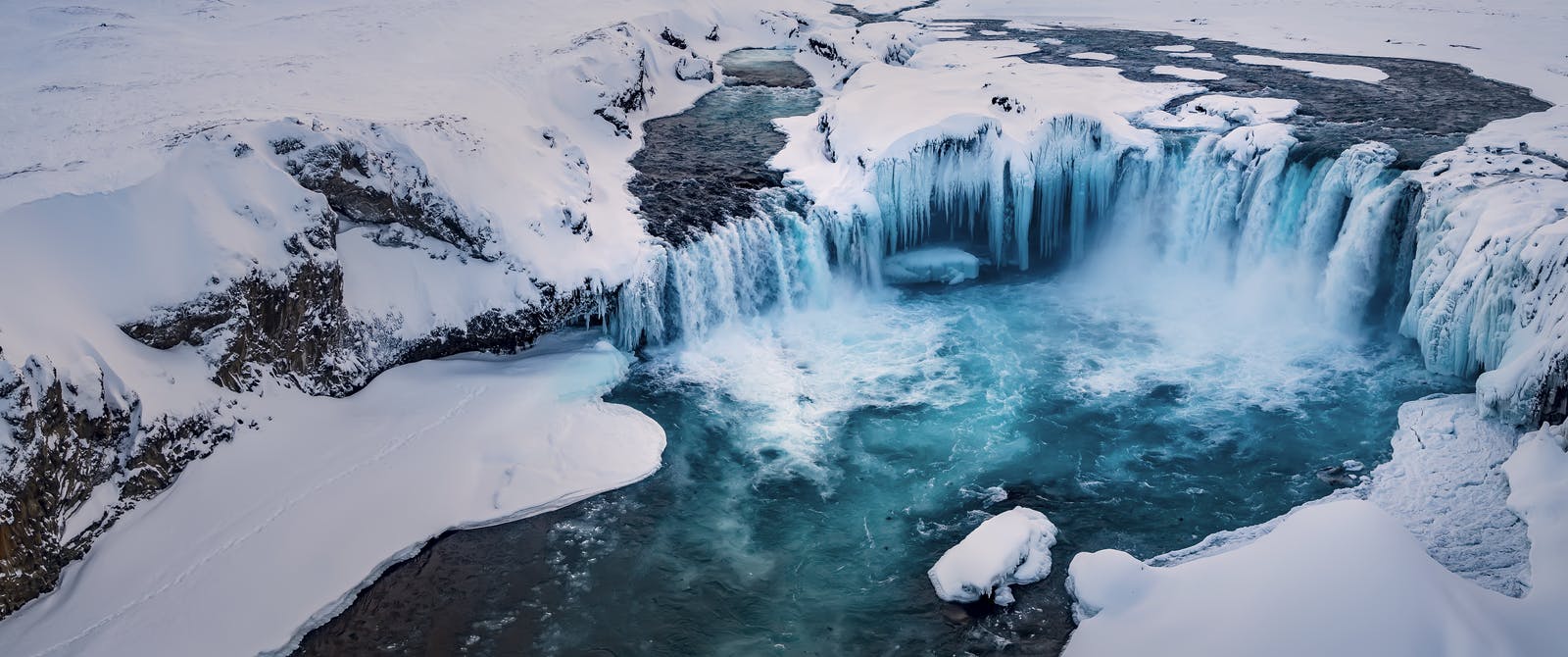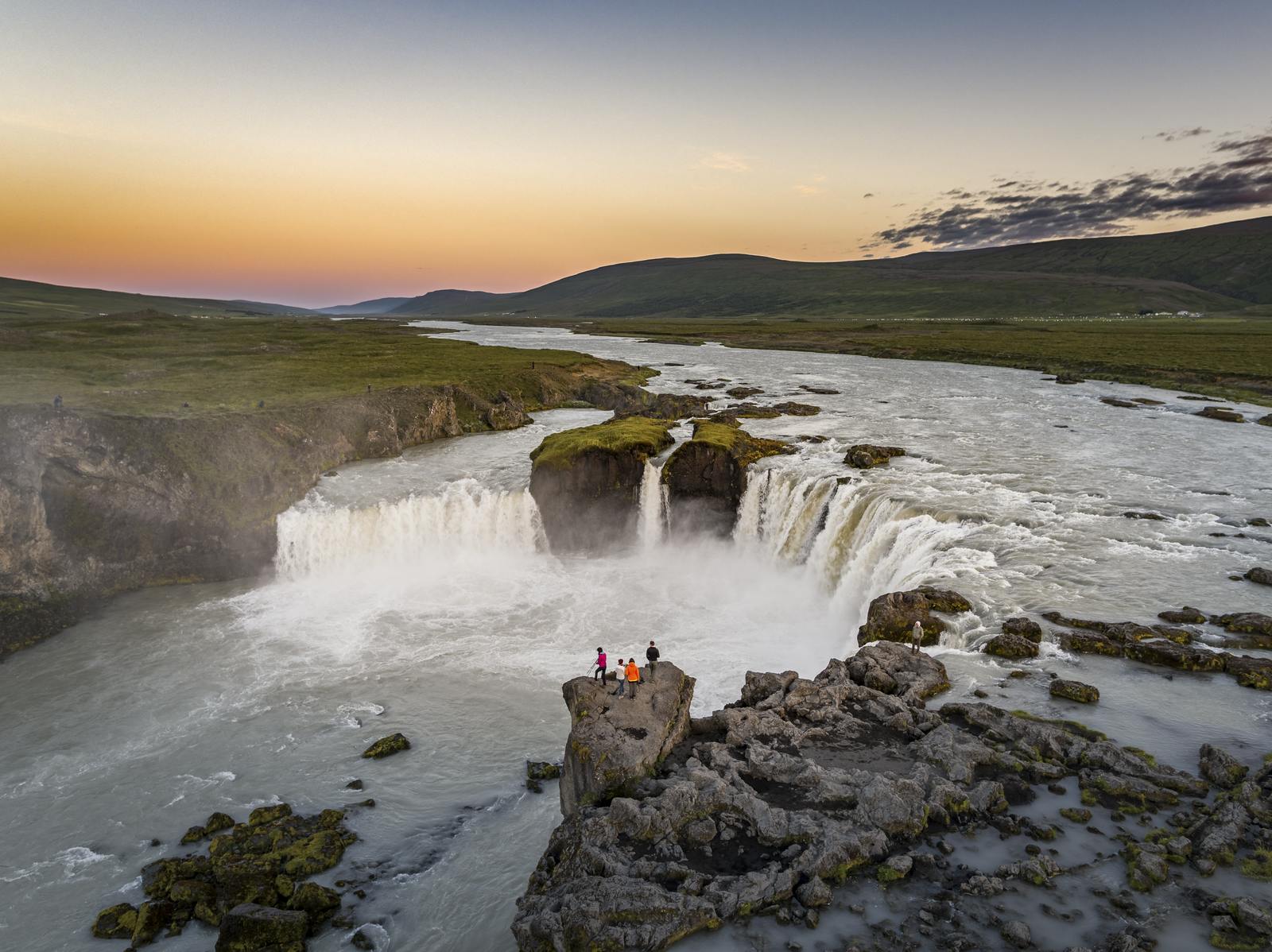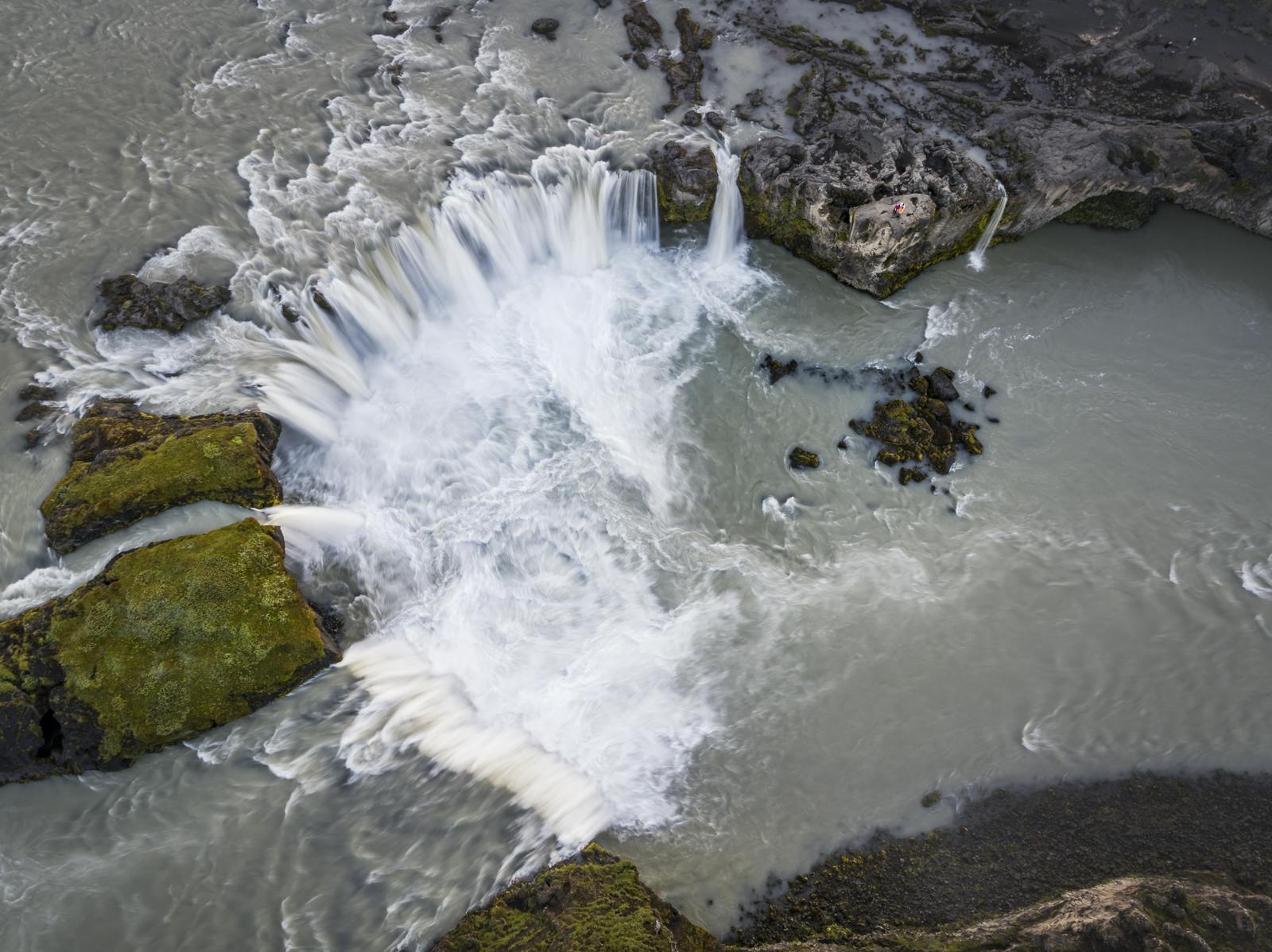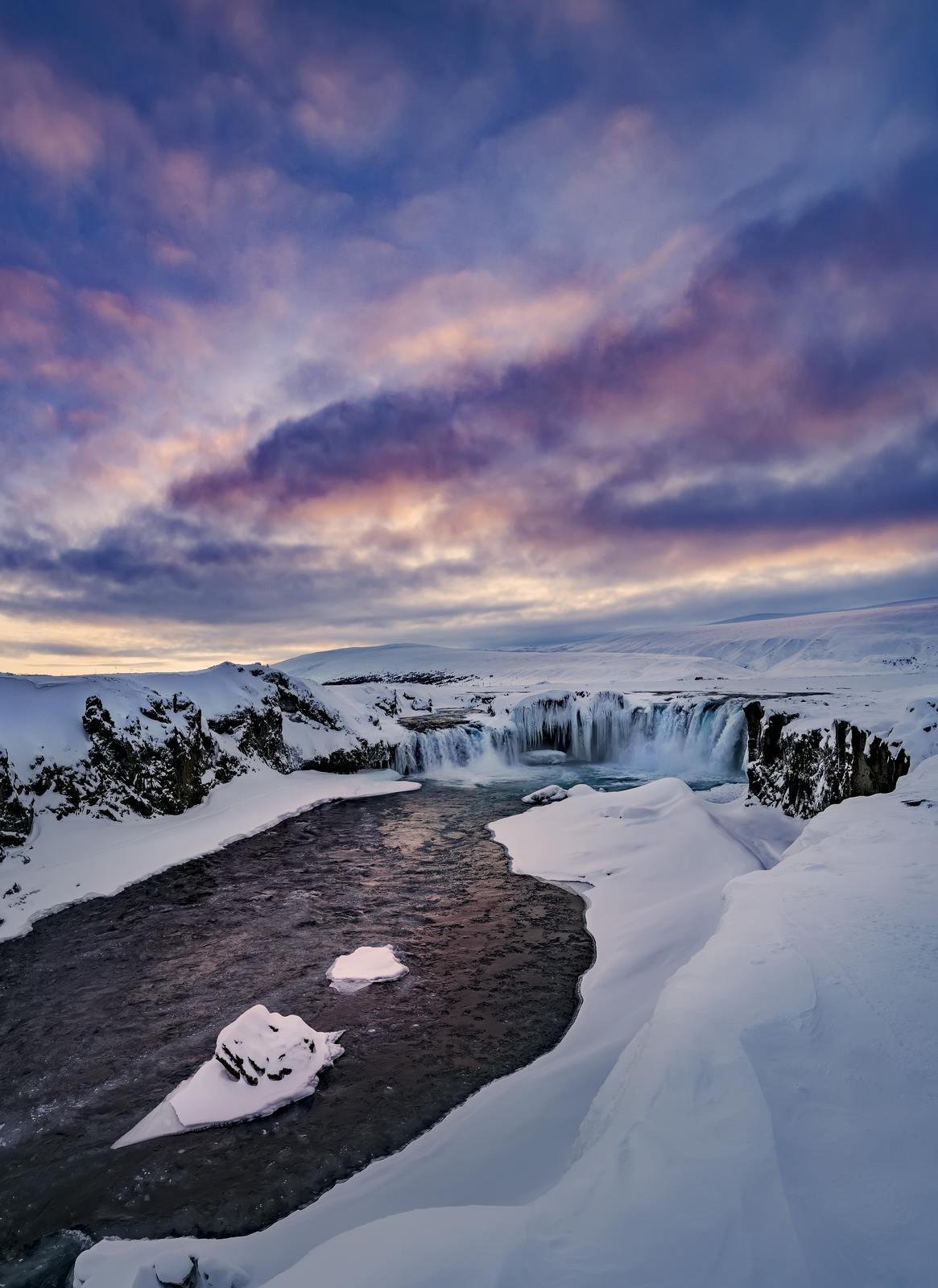
Guide to Goðafoss Waterfall in Iceland
Nestled in the captivating landscapes of Iceland, Goðafoss, or the "Waterfall of the Gods," stands as a testament to the country's natural wonders. Located in the north-east, this waterfall is one of Iceland's most iconic natural treasures. This iconic waterfall is more than just a cascade of water – it's a spectacle that intertwines history, mythology, and breathtaking beauty.
Imagine standing on the edge of a roaring river as it plunges over a horseshoe-shaped cascade, creating a symphony of thunderous echoes. That's Goðafoss for you, a 12-metre-high (39 feet) waterfall situated on the Skjálfandafljót River in the north-central part of Iceland. The sheer power and vitality of the cascading water are enough to leave anyone in awe.

The Legends Behind the Name
Now, let's unravel the mythical threads that weave through Goðafoss. Legend has it that in the year 1000 AD, Iceland stood at a crossroads between paganism and Christianity. As the story goes, Þorgeir Þorkelsson, a local chieftain and lawspeaker, converted to Christianity. To symbolise this momentous decision, Þorgeir threw his statues of the Norse gods into the waterfall, hence giving it the name "Waterfall of the Gods."
In fact, this legend is a nineteenth-century fake. The story of Þorgeir’s pivotal role in the adoption of Christianity in Iceland in the year 1000 is recorded in the old Sagas (Ari Þorgilsson’s Íslendingabók), and there is no mention of Þorgeir discharging his idols into Goðafoss.
Þorgeir Þorkelsson was the leader of the pagans, and he made his decision to change the official faith of the nation for the sake of unity and to prevent religious conflict within the Icelandic community. Whether you're a history buff or a mythology enthusiast, Goðafoss invites you to step into the pages of Iceland's rich past.

How To Get to Goðafoss
Goðafoss is located in the northeastern part of the country and can easily be reached by car. One of the fantastic things about Goðafoss is its accessibility. Unlike some of Iceland's more remote waterfalls that require a journey into the wilderness, Goðafoss is conveniently located along the country's famous Ring Road. It is a part of the Diamond Circle sightseeing route, which will also take you to Lake Mývatn, Dettifoss Waterfall, Ásbyrgi Canyon, and the town of Húsavík.
Reykjavík to Goðafoss
To get from Reykjavík to Goðafoss, you can choose between several transportation options, including driving, taking a bus, or joining a guided tour.
Driving
- Renting a car is a popular choice for travellers who want the flexibility to explore at their own pace.
- Take Route 1 (Ring Road) north from Reykjavík towards Akureyri.
- Goðafoss is located near the town of Akureyri in the northern part of Iceland.
- The drive takes approximately 5-6 hours, but the duration can vary based on road conditions and stops.
Bus
- You can check with local bus companies for schedules and routes. Strætó is one of the major bus companies in Iceland.
- Keep in mind that public transportation options may not be as frequent or flexible as driving.
- The journey by bus may take longer compared to driving.

Tours
- Some tour operators offer guided tours to Goðafoss from Reykjavík.
- These tours may include other attractions along the way and provide a guided and informative experience.
Akureyri to Goðafoss
Driving
- Renting a car is a convenient option, and it allows you to have flexibility and explore at your own pace.
- Take Route 1 (Ring Road) south from Akureyri for about 45 kilometres (28 miles).
- Follow the signs for Goðafoss. The waterfall is located just off the Ring Road.
Bus
- You can check with local bus companies for schedules and routes.
- Buses may not be as frequent, so it's essential to check the schedule in advance.
Tours
- Some tour operators offer excursions
- These tours may include other attractions in the area, providing a guided experience.
Before planning your trip, check for the latest information on transportation options and schedules. If you're driving, be aware of road conditions, especially in winter, and plan accordingly. Additionally, consider the weather conditions, as they can impact travel in Iceland.
If you are not planning on passing by Northern Iceland, but you are keen on experiencing Goðafoss, have no worries. At Perlan in Reykjavík, you can learn more about the different bodies of water that Iceland has. The exhibitions are visual, lively and constantly evolving, with a special emphasis on interactive participation. Here, you can learn more about the formation of waterfalls, the development of glaciers and much more.
Goðafoss in Different Seasons
Goðafoss is a true chameleon, donning different hues with each passing season. In the winter, the waterfall transforms into an icy masterpiece, with delicate icicles clinging to the rocks like nature's own artwork. Spring heralds the arrival of vibrant greenery, turning the surrounding landscape into a lush oasis. Summer brings with it the full force of the waterfall as it roars and rumbles under the Nordic sun. And when autumn arrives, the foliage around Goðafoss dons the fiery colours of a painter's palette, creating a mesmerising contrast against the cool blues of the water.

Practical Tips for the Adventure-Seeker
If you are planning on heading to Goðafoss, here are some practical tips for a seamless adventure.
- Wear sturdy and waterproof footwear - The paths around Goðafoss can be uneven, and you might encounter a bit of mud – especially after a good rainfall.
- Bring Rain Gear - Iceland's weather can be unpredictable, and Goðafoss has a habit of creating its own microclimate with mist. A good waterproof jacket and maybe even some rain pants will keep you comfortable.
- Remember your Camera! - And don't forget an extra memory card!
- Mind the Edge - The viewpoints near Goðafoss provide breathtaking vistas, but they can also be close to the edge. Exercise caution and enjoy the scenery from safe vantage points.
Goðafoss Waterfall FAQ
Where is Goðafoss Waterfall?
Goðafoss is located about 50 kilometres (31 miles) from Akureyri, the capital of northern Iceland.
Can you see Lake Mývatn, Goðafoss and Dettifoss in one day?
Yes, that is possible. All of these attractions are a part of the Diamond Circle, which takes you to Lake Mývatn, Goðafoss, Dettifoss, Ásbyrgi and Húsavík. You can embark on this trip by yourself by car or on one of many guided tours.
What is the story behind Goðafoss?
The story behind the name Goðafoss, or the "Waterfall of the Gods," is rooted in Iceland's historical and cultural narrative, intertwining the conversion of Iceland to Christianity and the decisions of a key figure named Þorgeir Þorkelsson.







